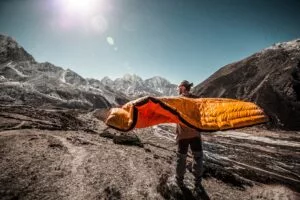
The Best Sleeping Bags and Quilts in Canada
A sleeping bag is an essential part of any camper’s gear. After a long day enjoying the sights and activities of camping out in nature, you will likely want to spend your nights comfy in bed, recharging your battery for another full day. However, the difference between a restful sleep and a restless night camping often comes from your gear, and especially your sleeping bag.
What you need in a sleeping bag really depends on what you like to do when you are out in nature, and where you like to camp. We have found an optimal sleeping bag for every kind of camper, so you do not need to worry about sleepless nights when you are out at the fishing hole, on the trail, or at your favourite camping loft.
For more articles on all kinds of camping gear, we have an expansive list of all our camping gear guides here.
Our top picks
What type of sleep system do you need?
Mummy bags – Mummy bags are a fantastic way to stay warm on those colder nights camping on mountains or lake-side. The mummy bag takes it name from its shape, which includes a hood and is contoured to be thinner at the legs, appearing like a sarcophagus of puffy warmth. Mummy bags might be warmest and most comfortable form of camping insulation, and often have zippers to help regulate your heat. However, they are typically very bulky and heavy, making them not the best choice for backpacking and other forms of camping that require lightweight gear.
Ultralight sleeping bags – Sleeping bags that are designed for backpacking or for other activities that require lighter gear usually take a typical mummy bag or sleeping bag design and remove, downsize, or substitute the components and materials to reduce bulk and weight. Some sleeping bag / quilt hybrids retain aspects of each type of bag, like less insulation on the bottom or straps to connect to your sleeping pad.
Backpacking quilts – When backpacking, you will be carrying your entire camping setup on your back, up a mountain, for a significant amount of your trip, so aspects like weight and packed size become huge considerations. Backpacking quilts are the choice of ultralight hikers who want to cut out as much weight from their packs as possible and dedicated hammock campers.
The design philosophy of the ultralight quilt eschews the hood and back of a sleeping bag since these parts of the sleeping bag barely contribute to the insulation of the bag anyway. Instead, the quilt is designed to either drape over yourself inso known as a top quilt) or to connect with a sleeping pad with a solid R-value to create a light-weight and well-insulated sleeping set-up a hammock (al.
What else to look for in sleeping bags
Temperature Rating – Each sleeping bag will have a temperature rating, that states a temperature, or a range of temperatures that the sleeping bag will be comfortable in. While the temperature rating is a helpful guideline, it is important to keep two things in mind. First, these ratings are for an optimized set up, including an adequate sleeping pad, especially for quilts, and secondly, these ratings range in whether they mean they are rated for comfort or survival at the listed temperature. We recommend looking at a few sleeping bags across a few different makes and models at the temperature range that you need, and comparing other specs that will impact warmth, like materials and fill amount.
Insulation – Where a sleeping bag’s warmth really comes from is the amount of insulation inside, or the fill weight when talking about down, and the quality of that insulation, or the fill power when talking about down. Fill power actually refers to the “loftiness” of the down fill, which corresponds to the amount of heat the down can trap. Down is naturally the best choice for sleeping bags most of the time, as it is a super-light, super-packable material that does a great job of insulating. Sleeping bags usually will have a fill power between 500 and 900, but we recommend looking at fill powers 800 + for Canadian environments. Synthetic insulation can vary a lot from other types of synthetic insulation, so unfortunately comparing different synthetic sleeping bags to each other is not as easy as comparing down sleeping bags. One thing to consider: some custom bags have the choice for overfill insulation, where the company will add even more insulation. This is a good choice for sleepers who run on the cold side.
Weight – For car camping, weight is barely a consideration. But for backpacking, or other types of camping where you have to carry all your gear to your campsite, you will be kicking yourself if you do not consider the weight of the sleeping bags you are looking at. When backpacking, the weight of your overall gear will really influence how enjoyable your hike is – if you are struggling carrying a 40 lb pack on your bag for several hours, you will likely not get the same enjoyment if you were not so over-encumbered. We recommend looking at sleeping bags that weigh less than 800g if you plan on backpacking this summer.
Size – The size of the sleeping bag will impact your use in many ways. Right now, by talking about size, we are talking about the listed size when sleeping bags is rolled out. You will need to consider the size of the people who will be sleeping in it and how the sleeping bag will be used. You should find a sleeping bag or quilt that is long enough for the sleeper to sleep inside of it comfortably, but not too long since the longer the sleeping bag means more material used in the construction, which often means higher production costs. In terms of width, quilts will often have narrower models for users who want to hammock, and wider models for sleeping on a pad on the ground.
Packable size – Packable size refers to the minimal space the sleeping bag will take up in your backpack, and to a smaller extent, how big any of the included stuff sacks are. The amount of space your sleeping bag will take up when packed up can really make-or-break a sleeping bag for backpackers, especially if the sleeping bag is too bulky for their bag. Down insulation really excels at being packed down for shorter durations, and so down bags are usually selected over synthetic bags for backpackers (keep in mind a down sleeping bag should never be packed up when you are not camping). The amount of packed size is measured in litres, however unfortunately this is rarely included with the specs listed for sleeping bags. Where we were able to, we listed the packed size or described user’s experiences with packing each sleeping down
Ventilation – Not all nights in the mountains or other camping locales will be the same. Some nights you might get too cold, and others might get too hot. Ventilation, even just provided by a zipper, can really help you get comfortable, no matter what the night is like.
Extras & Design features – This category is vague and broad by design. There are plenty of design features that are not standard across all sleeping bags that might be anywhere from a must-have for you or would just be nice to have. These can range from stash pockets where you can keep your phone or a headset, sleeping pad attachment systems, compression sacks and more.
Price – Price is always a consideration in anything you buy. But when it comes to camping gear, where prices vary drastically, knowing what your budget is and what type of product you can get for your budget will be important. Sleeping bags can be extremely cheap for extremely basic products. But once a company wants to cut weight and bulk while still keeping a sleeping bag warm and comfortable, the prices will go up considerably, even just for cost of materials and construction alone.
If you just car camp or stay inside building when you get out into the wilderness, you can buy a budget sleeping bag under $50 and then bring a blanket or two along for the trip. If you backpack, you will be looking at around $100 minimum for a bag, with ultralight quilts and sleeping bags easily costing $300 dollars plus.
The best modular sleeping bag
The North Face One Bag Sleeping Bag system
If you camp in all sorts of locales, seasons, and climates, you likely need a versatile sleep system to get comfortable in a variety of conditions. The North Face One Bag Sleeping Bag system is a modular sleeping bag system, including two different layers that can be combined or used separately for three-different sleeping configurations.
The One Bag consists of three different components with three different configurations. There is an insulated posterior, an orange top cover rated for -6°C, and a blue top cover designed for 4°C. The insulated posterior weighs approximately 538 grams, the blue cover weighs just 453 grams, and the orange cover weights 708 grams. In total, the entire sleeping bag comes in at a heavy 1701 grams, or 3 lbs 12 oz, although you will not need to bring certain components if you predict they will be unneeded. The anti-compression back layer is composed of Heatseeker Pro synthetic insulation. The blue top layer features Heatseeker™ Pro synthetic insulation. The orange mid-layer features an 800-fill ProDown insulation. Either or both covers can connect to the bottom, with the combined bag rated for temperatures as low as -15°C. Each of the components feature a 20-denier Nylon taffeta material, complete with a non-PFC Water Repellent, providing decent durability and resistance to moisture.
The North Face made a number of decisions to boost sleeping with this sleep system. A large, fitted hood allows you to pair this sleeping bag with a pillow of your choice. The vaulted footbox gives lots of space at your feet. Included is both a storage sack when not on the trail, and a compression sack that compacts down to 28cm x 36cm. The included compression sack features fleece on the inside, which makes the compression sack a strong option for an improvised pillow if stuffed with clothing. The One Bag has so much versatility, that some users enjoy using the down layer as a stand-alone quilt around camp, or just prefer doubling up their sleeping bag layers.
Users were generally very impressed with the versatility that this bag offers. Since this sleeping system is essentially rated for three different temperatures, users who have varying requirements for different camping trips really enjoy the several types of sleeping conditions users can get with this sleeping system. Users also like the comfort of the materials and design of this sleeping bag. However, this is a bulkier, heavier sleeping system, making consideration of your backpack and other gear an important step before bringing this sleep system on your next backpacking trip.
Pros
- 3-in-1 construction offers unparalleled versatility from one sleeping bag purchase.
- Warm enough for cold conditions.
- Extremely comfortable.
Cons
- Individual components or entire set-up are on the heavier and bulkier sides of sleeping bags.
The best ultralight sleeping bag
Therm-a-rest Hyperion
For those interested in cutting back the weight of their sleep systems, you should get familiar with the name Therm-a-rest. In addition to offering some of the best lightweight sleeping pads in the world, the company crafts some impressive sleeping bags and quilts for backpacking, and the Hyperion is no exception. This sleeping bag offers some impressive specs in part to quality materials and impressive construction.
Therm-a-rest’s target demographic is primarily backpackers, and so their products like the Hyperion are ideal choices for any excursion where weight is a consideration. The Hyperion is offered in temperature ratings of 0C and -6C, giving Canadians a strong option for a summer or even 3-summer type bag. The heaviest Hyperion bag, the -6 °C degree Long-sized Hyperion, comes in at 623g – making it easily one of the lightest sleeping bags at its temperature rating. For the sake of simplicity, we are focusing on the -6 °C bag. The Hyperion also packs up incredibly small, fitting in a compression bag of 20cm x 15cm.
Packed with 900-fill Nikwax Hydrophobic down which Therm-a-rest claims stays drier and maintains it loft sixty times longer than untreated down, the Hyperion proves decent as a summer or even a 3-season sleeping bag. The reason such a light-weight bag can prove surprisingly warm is due to thoroughly considered design. The insulation is zoned to maximize the effect of the insulation, with 70% going on the top and sides of the bag. Mesh box baffles maximize loft and reduce cold spots developing at the seams.
The shell and lining fabric are both constructed from 10D Nylon Ripstop, with a DWR (durable water repellent) finish on the shell. The cut of the bag is designed with ergonomics in mind, with a zipper, and comfortable contoured shape. Therm-a-rest also makes quilts (more on that later), but many of the design principles find their way into this bag, and the insulation is sparse on the underside of the bag and more prominent on the top and the sides. To optimize this sleeping bag’s thermal properties, it is encouraged you pair this bag with a sleeping pad with a strong R-value, exceeding four. Built-in SynergyLink Connectors allow this sleeping bag to connect to your sleep pad to prevent drafts and seal in warmth.
Users are very impressed with the ultra light and super packable sleeping bag. However, users understand with the lightness of this sleeping bag, there are some concessions. Some users find the zipper too short, which makes getting in and out of the sleeping bag harder than it needs to be. Some users found the contoured shape was too tight for them to comfortable move around in or sleep inside. Also, it is important to note that this bag is quite expensive. If you prioritize lightweight and packable size in your sleeping bag, this is one of the best choices you can make.
Pros
- Exceptional weight and an extremely packable size make this a great choice for ultralight backpackers.
- Strong warmth for its weight.
- Connects to your sleeping pad via its SynergyLink connectors.
Cons
- Zipper is quite short and can make entering and exiting the sleeping bag a hassle.
- The bag is not sized for everybody.
- Expensive.
The best backpacking sleeping bag
Western Mountaineering Ultralite
If you are looking for a sleeping bag that checks all the boxes and budget is not an issue, the Western Mountaineering Ultralight bag is well worth looking into. While it is priced high, smart design and quality components make this sleeping bag well worth the price for three-season backpackers.
Balance of attributes is key for lightweight gear. The heaviest aspects of a sleeping bag – namely insulation and the shell material – are often the aspects that provide the most warmth and comfort. With that being said, the first thing we need to sing the praises about the Western Mountaineering Ultralite is the warmth and comfort it offers for an ultralight bag. With a temperature rating of -7 °C, this bag is a strong choice for 3-season camping.
The warmth is attributed to 425-480g grams of 850 fill power down that is organized with a continuous baffle construction to minimize cold spots. The down-filled draft collar prevents all your warm air escaping around your shoulders and neck. Even the shape, with its narrow profile and close fit, is designed to improve it is insulating capabilities. Less insulation on the bottom makes it a smart idea to pair with a solidly rated sleeping pad. Coming in at a price range around 795 grams to 880 grams, this bag is not the lightest “ultralight” sleeping bag available, but considering over half its weight is down, you get an impressively warm bag. It also packs down small too, making it an excellent choice to bring into the Canadian Rockies, for example.
Western Mountaineering did not cheap out on any of the components. Even the somewhat delicate shell layers are designed for optimal lightness. With both the shell and lining fabric crafted from a 12-Denier nylon, the material is not very durable. If you are careful with the sleeping bag and you trust your tent’s ventilation and water-resistance, this should not be too much of a concern. The zipper is even a YKK, so you can trust it to last and to not snag.
A stuff sack is included, but we are not sure if the stuff sack is a compression sack or not. The packed volume of this bag is as small as 7L, but the recommended compression sack size is 12L.
Users have complemented the Western Mountaineering Ultralite sleeping bag’s design. From using down of a high fill-power, using continuous baffles to keep the insulation consistent, there were some criticisms regarding the temperature, stating they found themselves cold in temperatures within its temperature rating, yet others found this bag warm. Funnily enough, comments detailing what other gear they used with the sleeping bag were overall more positive regarding how warm they were, going to show your comfort when sleeping really comes down to many factors. The true downside to this bag is the price, being one of the more expensive choices on this entire list.
Pros
- Very packable, very lightweight.
- Strong warmth in the right configurations, but this bag is not warm enough to do all the heavy lifting.
- Full-length zipper.
Cons
- Delicate shell requires handling with care.
- Expensive price.
Best 3-season sleeping bag
Sea to Summit Spark
The sizing of a sleeping bag is worth looking into. A defining principle of modern, lightweight sleeping bags is to reduce the space inside so there is less room for cold air to enter. While this works in principle, people with different body types will see the benefit of this differently. If you want a roomy yet lightweight sleeping bag that will provides a lot of comfort, the Sea to Summit Spark is a strong sleeping bag that you will certainly be comfortable in.
The Sea to Summit Spark is a versatile sleeping bag that is available four different sizes, ranging from 4 °C degrees to -15 °C. For purposes of convenience, we focused on reviewing the -2°C version – providing enough protection from the coldest nights while on the mountain, without overheating significantly during the warmer ones.
Packed with between 300g to 345g (depending on the size) of 850 fill-power goose down, the Sea to Summit is a warm sleeping bag. The down fill is treated with a water-repellent finish that also improves the antimicrobial protection of the down. A sewn-through baffle construction prevents the development of cold spots over time.
Even with 300 grams plus of insulation, the Spark sleeping bag is very lightweight – the -2°C weighs either 490g or 560g for the regular or long version respectively. The face fabric is a 10-denier nylon, and the lining fabric is 7-denier, so most of the external material is very thin. While this is a delicate material, this does improve the sleeping bag’s packability.
While some ultra-light sleeping bags make sacrifices in regard to comfort, the Sea to Summit Spark is a comfortable sleeping bag. One of the major downsides for some users of many of the bags we have reviewed was how constricting they are. Not everyone sleeps the same, and while some want to be tightly wrapped by their sleeping bag, some can’t sleep while feeling constricted. The wider girth at the shoulders, hips and foot box improves the amount of space inside the sleeping bag. A 1/3rd zipper is a little too short for many, unfortunately making getting in or out of the bag harder for some.
Included with this sleeping bag is a lightweight silnylon compression sack. While we were unsure the size of this compression sack, a 5L compression sack is listed as ideal, but the packed volume of this bag can be stuffed as small as 2.5L and 3.5L.
Overall, users find this a remarkably comfortable, remarkably lightweight sleeping bag.
Pros
- Comfortable sleeping bag with enough room for sleepers of all kinds.
- Wide selection of temperature ratings across two sizes of sleeping bag.
- Lightweight and easy to pack.
Cons
- Might need a liner to really get the most out of it.
Best down sleeping bag at a budget
MEC Draco and MEC Delphinus
I have included many sleeping bags and quilts for users who have high demands of their sleep system when camping. But backpackers only make a fraction of the campers who will look to sleeping in a sleeping bag, and many campers will sleep in tents, hammocks, or even their car with a sleeping bag. If you want a sleeping bag that offers versatility and comfort more than a Walmart sleeping bag can, the MEC Draco and Delphinus lines are well worth looking at.
The Draco and the Delphinus offer comparable, if not identical, features and specifications, with slight differences based on size since they are designed for masculine and feminine bodies, respectively. The MEC Draco and Delphinus are available with temperature ratings of -9 and 0 degrees Celsius, and the former available in a junior size. We have decided to focus on the 0-degree bag, since certain factors of this bag make it less ideal for bringing it into areas like the mountains where it can get colder.
However, this bag is still not a bad choice if the temperature dips towards zero. Packed with between 339 grams (for the regular size Draco) or 361 grams (for the long size Draco) of 650 fill-power duck down provide plenty of warmth. Vertical baffles maintain a consistent temperature and prevent cold spots from developing. The weight varies between 965g to approximately 1100g for the Draco, and between 905g and 961g for the Delphinus. While is on the heavier and bulkier side of sleeping bags for lightweight backpacking, these bags can still be dragged onto the trails if you got the space in your bag for it.
The materials these sleeping bags are made from provide strong durability. The shell is constructed from 30-denier woven nylon, making a slightly bulkier in exchange for increased toughness. The cut of the sides is somewhere in the middle, not being too tight that it restricts sleepers or not being too loose that heat quickly leaks out. The draft tube keeps heat from escaping or cold from seeping in. A small internal pocket holds anything from phones to headlamps. Complete with a YKK #8 zip that does not snag or wear and can connect to most other MEC bags for two-person sleeping set-up, and you got all you need for a cozy sleeping bag.
Included is a compression sack for storage. The recommended compression sack size is 8L, but this sleeping bag can be backed down for 4L.
Overall, users found this sleeping bag packs a punch for its price. While it is considerably more expensive than a cheap sleeping bag found somewhere like Walmart, the Draco comes in at around half the price of many of the other sleeping bags on this list and offers features very similar to the latter bags than the ones at Walmart. For a down bag with durably thick nylon shell, you would not really expect to pay so little with this bag. While this bag offers a great list of features, there are some reasons why this bag is not in the same strata of other backpacking bags we’ve listed. Bags like this are on the heavier side, and this bag does not pack down well. However, for car camping, this is about as expensive a bag you can justify unless you plan on camping in colder weather
Pros
- Budget price for a strong performing down bag.
- Warm and comfortable.
- Durable.
Cons
- Not light enough or packable enough for serious backpacking or lightweight camping consideration.
The best double sleeping bag
Big Agnes Dream Island
If you share your bed with a special someone and would like to do the same in the outdoors, a double sleeping bag is worth looking for. While not every camping couple will want to go with a two-person sleeping bag, if you are in the market, we suggest the Big Agnes Dream Island.
The Big Agnes Dream Island is available in 20F and 35F, but for the sake of consistency, we are going to refer to the -9C Dream Island version exclusively. At this temperature rating, this model is a strong 3-season sleeping bag, although might be on the warmer side in either party sleeps warmer. With lots of space within the Big Agnes Dream Island, including a larger footbox and adjustable hood, lets both sleepers stretch out however they sleep most comfortably.
The Big Agnes Dream Island is filled with a FireLine Max synthetic insulation comprised of 50% of post-consumer recycled polyester. While down is our preferred material for sleeping bag insulation, there are strong arguments for synthetic insulation. It is typically much better at insulating when damp, hypoallergenic, and typically less expensive as well. The Dream Island features plenty of design choices we look for in a quality sleeping bag: horizontal baffles help distribute insulation to keep everyone warm, and a draft flap hidden behind the zipper prevent loss of heat.
More like backpacking quilts than most other sleeping bags, the bottom of the Big Agnes Dream Boat is not insulated. This means it is more important that you pair this sleeping bag with quality sleeping pads with a stronger R-values, with a recommended minimum still being R-values of 4. An integrated sleeping pad can fit two 64 x 198cm sleeping pads or one 127 x 198 double sized pad. The Dream Island is constructed with a lightweight nylon shell, and a soft polyester microfibre lining.
This sleeping bag is heavy and bulky. Coming in at approximately 3430 grams, this bag is easily twice as heavy as many of the sleeping bags on this list. This makes it less ideal for backpacking, but only needing one person to pack a sleeping bag lets another have more space for other gear. however, the optimal use for this bag will mostly be for car camping and other more relaxed camping scenarios.
There are many bonus features this sleeping bag feature, including built-in pockets for pillow, interior loops to securely connect a sleeping bag liner, and hang loops let you air this sleeping bag out easily. This sleeping bag includes a nylon stuff sack for taking this sleeping bag into nature, and a mesh storage bag that keeps the bag lofty while still in use.
Overall, users find the Dream Island a cuddly, cozy sleeping bag for two. Since space is a big feature of this bag, most users will be fine with the space it provides, but this does mean cold air can and will seep in during your night. However, users find they can prevent being cold by layering up. There are some downsides that otherwise should be discussed – the zippers can be prone to jamming, and some users are just not fans on the lack of insulation on the bottom of this sleeping bag. If you have the sleeping pad(s) to go with this sleeping bag, this is a strong option if you want to share your sleeping bag.
Pros
- Cuddle under this sleeping bag with your special someone.
- Plenty of space.
Cons
- Very heavy and bulky as sleeping bags go.
- No insulation on the bottom, so you will need to pair this with the appropriate sleeping pad(s).
The best customizable quilt
UGQ Bandit Custom
The UGQ Bandit is also our choice for the best hammock top quilt.
If you have specific specs in mind, you might want to work with a company to create the perfect quilt for your needs. While many cottage companies in Canada and south of the border will make your quilt to order, UGQ is renown for their custom quilts.
Almost every feature of the Bandit has options for customization. Let us start at the temperature rating – UGQ offers 5 different temperature ratings, rating from 4 to -18 Celsius. Each temperature range has a variety of customizable options, including three different Fill Power options, as well as additional overstuff filling in the body and footbox.
The UGQ Bandit is available in four different widths and lengths, so you can customize it to your size. Even further customization options exist for the UGQ Bandit when talking about the shell material. The outer shell can be constructed from either the base MRS20 fabric – a ultralight and durable 20-denier fabric with a DWR finish – or M10T fabric, an ultralight 10-denier that offers strong breathability, water- and wind- resistance. The inner shell features the M10T fabric. Each material has between 14 to 16 colours for a customizable look. A neck-line draft collar is possible to add to improve the heat retention around the entrance to the sleeping bag. You can also choose to have no taper, instead of the taper. You can even choose the foot box style, between a zipper & draw cord set-up, and flat sewn footbox, or a fully insulated footbox.
There are a wide number of bonus features that you can customize your UGQ Bandit with. You can add pad attachment options to get the most out of your sleep system. Dynamic tension control is an option available, adding elastics down the length of the sleeping bag that help pull the sides under you, further improving the degree of warmth you can maintain with this quilt and a sleeping pad with a strong R-Value. You can also add a storage bag with dimensions of 24×36 for when the quilt is not in use.
Obviously, with so many variables, the weight of the UGQ Bandit is going to vary. At it’s very lightest, the UGQ Bandit can come in at around 425g, but obvious the bigger, loftier, and bulkier the bag gets, it will also get warmer too. Users are generally super impressed with the degree of customization that this quilt provides.
Overall, users are very happy to get the quilt they want in collaboration with UGQ. Users complimented the company’s customer service for being responsive and professional, helping users figure out what they need out of their quilts. No matter what you need from a bag, you can get a configuration of different components UGQ offers that make up the perfect sleeping bag. Honestly, the only downside is the lead time and delivery fees that are both unavoidable ordering from UGQ.
Pros
- Supremely customizable.
- Diverse options of quality components.
- The people at UGQ are really easy to work with to get the perfect quilt.
Cons
- Long lead times mean you will have to wait for this quilt to be delivered.
The best budget sleeping quilt
Hammock Gear Economy Burrow Custom
Another strong quilt that lets you design it your way is the Economy Burrow from Hammock Gear. This more-budget friendly customizable quilt is a strong choice for tent campers and hammock afficionados alike.
Like other customizable hammocks, there are a lot of different options that allow you to tailor your hammock to suit your needs perfectly. For starters, the Economy Burrow is available in 5 different temperature ratings, ranging from 5 °C and -17 °C. With three lengths (short, standard, or long) and 2 widths (regular for hammocks and wider for hammocks and ground use), you can get your quilt to suit your body type and sleeping setup.
The Hammock Gear Economy Burrow Custom is packed with 800-fill power duck down insulation, treated with Nikwax to protect from moisture. While this keeps prices down, duck down is not as strong in terms of warmth-to-weight as goose down found in many other high performance sleeping quilts. While you do not have choices regarding customizing the fill-power, you can add up to 4 ounces of overfill, adding more warmth if you are looking for a colder-performing bag or you sleep colder.
Let’s get into some of the other customizable options on the technical side. You have the choice between zipper and sewn footboxes, so you can choose whether you want more ventilation and versatility, or more heat retention respectively. A ground pad attachment kit allows this quilt to combine with sleeping pads, which is always a good idea when camping with a quilt. A stuff sack for hiking is included. Depending on what temperature rating your quilt is, these bags can be packed down between 4.5 L and 8.5 L. The latter is supremely packable, making a great choice for reducing bulk in your bag.
Overall, users find this one of the best quilts for hammock or lightweight camping without spending too much money. At its price, the Economy Burrow performs well across the board, but does not wow in any particular areas. Some of the cost-effective measures, like using duck down, or the loose foot box, were double-edged, keeping prices down for the sacrifice. If you have a little more money, opting for the Premium Burrow from Hammock Gear or the Bandit from UGQ. But for a budget choice, the Hammock Gear economy Burrow is a real strong choice.
Pros
- Extremely versatile options so you can design your quilt the way you want.
- Extremely packable and lightweight.
- As expensive as quilts can be, this quilt is a budget friendly option.
Cons
- Long lead times make ordering this well ahead of your next trip an imperative.
- Does not perform as well as others when the temperatures get lower.
The best ultralight quilt
Therm-a-rest Vesper Quilt
Ordering a custom quilt with the specifications of your choosing has its advantages, but also its disadvantages. Long lead times and often pricy shipping fees can make ordering a quilt a from a cottage company in the States a headache. If you are looking for the ultralight performance of a quilt that you could find in a well-stocked outdoor goods store, then we recommend checking out the Vesper quilt from Therm-a-rest, for its strong performance and ultralight design.
The Therm-a-rest Vesper is available in three different temperature ratings (-6 °C, 0 °C, 7 °C), but for the sake of simplicity, we are only going to be discussing the specs of the -6 °C quilt. In addition to this model being the most available in Canada as of writing this article, we suggest looking into bags and quilts with a colder rating, since backpacking in Canada’s mountains can be colder than you would expect, and you would be able to backpack in 3-seasons with the bag, not just one.
Packed with 900-fill down with a Nikwax Hydrophobic treatment, the Vesper contains between 360 and 390 grams of insulation depending on the length of the bag, proving exceptionally warm and lightweight. Depending on the length of the bag, the Therm-a-rest Vesper only weighs in between 540g and 600g. The bag is crafted from an exceptionally lightweight 10-denier ripstop nylon shell, complete with a DWR-treatment to protect the bag against moisture and condensation.
Mesh baffles ensure the down stays in place, preventing cold spots from developing and keeping the insulation properly lofted. Therm-a-rest also took many other precautions to protect from drafts and other losses of heat, including side baffles, a snap-neck closure, and a fully insulated footbox. Like most other Therm-a-rest bags, the Vesper comes complete with a removable SynergyLink connector, that connects the quilt to your sleep pad, which allows the Vesper to improve its performance when paired with a sleeping pad with a strong R-Value.
Overall, users are very impressed with the performance of the vesper, especially considering its ultralight design. Users complimented the bag’s warmth, especially when paired with a strong sleeping pad. While it might not be truly rated into the negative temperatures, it is for sure strong enough for most 3-season conditions. However, there are some downsides that are notable. Some users had noticed the length measurements were off, suggesting inconsistent measurements. The bag only features a single cord to connect to your sleeping pad, meaning some users found the quilt drafty if the quilt was not connected right. While these downsides can be unfortunate, using this ultralight bag during the warmer months can be a great way to get your base weight down.
Pros
- One of the lightest options on this list.
- Extremely packable.
- Strong thermal protection with consistent insulation.
Cons
- Very expensive.
- Only one cord to connect to your sleep pad.
Best underquilt for hammocks
Hammock Gear Incubator Custom
If you have never slept a cold night in a hammock, you might be unsure regarding the functionality of the underquilt. The underquilt’s job is to insulate from underneath, since many sleeping bags and top quilts feature insulation that will not insulate when compressed. In many ways, the role of an underquilt for sleeping in a hammock is quite similar to that of a sleeping pad in the tent. You can use a sleeping pad in some hammock configurations as well, but underquilts bolster the feeling of sleeping in a hammock.
A familiar name and always a great place to start looking for hammocking gear, Hammock Gear offers a supremely customizable underquilt with the Economy Incubator custom. This budget underquilt offers many customizable options, a clear upgrade choice in the Premium Incubator custom, and the expertise that Hammock Gear brings to all their hammocking and camping gear.
The Economy Incubator, much like the Economy Burrow, is available in a range of temperature ratings, ranging from 5 °C and -17 °C. Three different lengths of underquilt lets you pick the right sized one for your height and the size of your hammock. After those key options are made, you only have to decide on the colour of the outer and inner shell, and if you want any overfill down to make the underquilt warmer.
Consisting of a down down insulation with a fill-power of 800, complete with a Nikwax DWR coating to help protect the down insulation from moisture. The fabric that the shell is constructed from is a 20-denier nylon taffeta, also with Nikwax DWR coating to improve resiliency and the thermal properties, even if it gets wet outside. The uniquely contoured design optimizes the position of the insulation to fit your body, minimizing cold spots from coming from below.
The Incubator Custom compressed down into a compression sack, between 4.5 L and 8.5L, depending on the temperature rating.
Overall, users were really happy with their order of the Economy Incubator from Hammock Gear. Hammock Gear is dedicated to producing quality products and have the customer service to ensure that their customers are as passionate about their gear as they are.
Pros
- An inexpensive underquilt with tonnes of customization.
- Warm, DWR-treated duck down keeps your backside warm.
Cons
- Long lead-times.
Bonus: best sleeping bag liner
Mountain Warehouse Mummy Silk Sleeping Bag Liner
Sleeping bag liners serve a dual purpose: they can reinforce the insulation in your sleeping bag, improving how warm your sleep system is, as well as keeping your bag cleaner, longer, providing a layer between your bag and your body. Different types of sleeping bag liners exist for your exact purpose, including fleece, synthetic, and Thermolite liners. However, silk is a quality material used in sleeping bag liners that we highly recommend if you can afford it. Lightweight, packable, and provides both insulation and breathability, silk liners offers a lot of utility.
The Mountain Warehouse Mummy Silk Sleeping Bag Liner is a strong companion to any mummy bag. This hyper comfortable liner will make any mummy bag a more comfortable sleep in any conditions. As mentioned previously, silk can both insulate in cold weather (although not as much as fleece or other kinds of liner) as well as being breathable and absorbent when the weather is warmer. This allows for improved sleeping and sleeping bag lifespan, no matter your camping habits.
Weighing 140g, even ultralight campers could justify packing this sleeping bag liner. The one thing that might be a detractor is the price – you can easily find sleeping bag liners at one third of the price. You can easily find a cheaper sleeping bag liner if you find yourself cold in your current bag or you want to keep everything cleaner, but across all situations, you cannot go wrong with this liner here.
Our methodology
When looking for a sleeping bag, backpacking quilt, or any type of sleep system for camping, there are many, many features that you will need to consider that are reflective of how you camp and sleep.
Of course, how you sleep will be a major factor, and you should consider your size, how you position yourself when you sleep, if you sleep hot or cold, and other sleeping components you own like sleeping pads or tents. The degree that you can achieve that desired perfect you sleep when camping then relies on the conditions you will be camping in, and your gear.
If you are camping up in the mountains, you will need to consider colder temperatures than typical for that type of year and the wind, for example. If you stick to summer camping, you might need to prepare for extremely warm nights and cold, rainy nights. If you camp in seasons outside summer, you will need to put even more consideration for staying warm in even lower temperatures.
Frequently asked sleeping bag questions
How to wash a sleeping bag?
Washing a sleeping bag is an intensive process, and so maintaining the cleanliness of your sleeping bag should be a priority. Cleaning up before bed and using a sleeping bag liner are good ways to maintain the cleanliness of your sleeping bag. But it is inevitable that with enough use, your sleeping bag will need to be cleaned.
We always recommend following manufacturer instructions before cleaning any item. If the manufacturer’s instructions contradict the following advice, take the manufacturer’s advice instead.
There are two main ways to clean a sleeping bag: spot cleaning when individual parts of the sleeping bag are getting soiled or cleaning the entirety of the bag.
Spot cleaning a sleeping bag is very easy, as you just need a mild soap (like dish soap) and a rag or old toothbrush. Use a little soap and water to clean the dirtied parts of the sleeping bag’s shell and rinsing the soap off, taking great care to not wet the insulation. Let the sleeping bag fully dry before putting away so the sleeping bag does not start to smell and grow mold or mildew.
When fully washing a sleeping bag, whether the bag is filled with down or synthetic will influence the best course of action to wash it. Either can be washed by hand or in your washing machine. For both, it is recommended you use a mild, non-detergent soap for cleaning, optimally using a soap that is designed for the material of your sleeping bag. For a step-by-step guide from here, we recommend checking the MEC page on this topic.
How to fold a sleeping bag?
You shouldn’t fold, but instead stuff your sleeping bag in. While a neatly folded sleeping bag may seem more organized, folding can be harmful to fibres used in the bag’s insulation. A sleeping bag should be stuffed into a stuff sack or rolled up before camping, and laid out loosely, hung-up, or lightly bundled up when not in use at your home.
How to pack a sleeping bag in a backpack?
How you pack your backpack can be essential to your backpacking trip. The way your bag is packed affects the comfort and ergonomics of your bag, the accessibility to your gear, and how fast you will be able to set up camp. Most backpacking bags have multiple areas you can pack gear into, including the larger main pocket, a large pocket on the bottom of the bag, and pockets on the sides. Optimal loading usually involves putting bulky gear like your sleeping bag in the bottom of the main compartment or the bottom pocket of the bag, since you do not need your sleeping bag until it comes time to set up camp.
We suggest using a stuff sack to compact the sleeping bag into a manageable size before packing it. Most bags will include their stuff sack.
What temperature sleeping bag should I get?
When shopping for sleeping bags, knowing where you camp, what time of year, and what conditions you will be using the bag in will be helpful in your decision. You ideally will want a bag rated for the coldest likely conditions you will camp in, which varies greatly depending on the above factors. Strict summer campers will likely not need a bag rated for temperatures into the negative temperatures. 3-season campers should choose a bag rated to negative temperatures but should be balanced against the warmer temperatures you might see as well. If you plan on winter camping, that involves a lot of preparation, and you will likely need a dedicated winter camping sleeping bag.
What is the smallest sleeping bag when packed?
It can be really hard to compare individual sleeping bags in terms of packability, since not every bag will list the size it can pack down into. In general, a down quilt will pack the smallest. The less down insulation included will also influence how small the sleeping bag can pack down into.
Read more
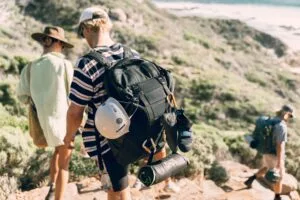
The Best Hiking Backpacks in Canada
Hiking backpacks are an important thing to have for a hike. That’s why we created this buying guide.
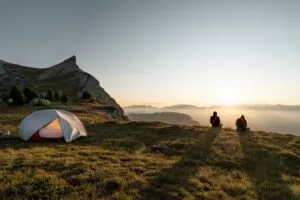
The Best Camping Tents in Canada
Camping is one of the best ways to get into nature, but without the perfect tent – your trip can go downhill fast.
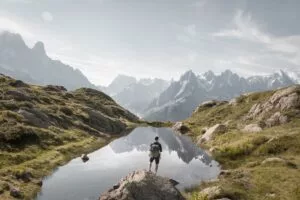
Hiking Guide: Getting the Most out of Day-hiking and Backpacking
Hiking can be the best way to enjoy the sights and sounds of nature. This guide will help you get started.
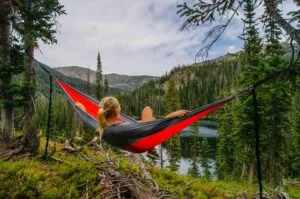
The Best Hammocks for Camping in Canada
Hammock camping can be one of the most comfortable ways to enjoy the outdoors.

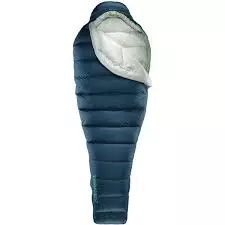

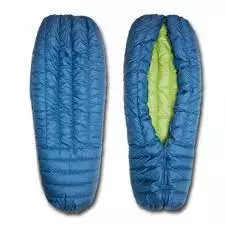
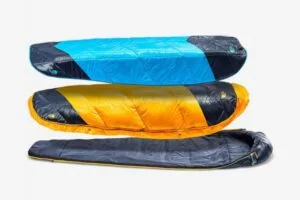
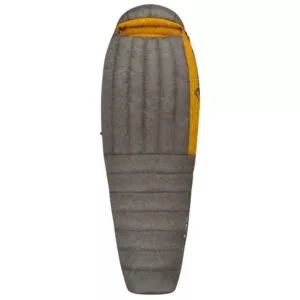
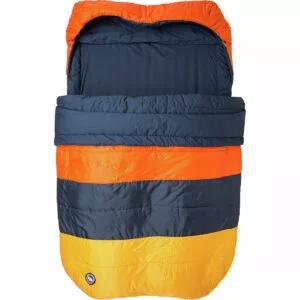
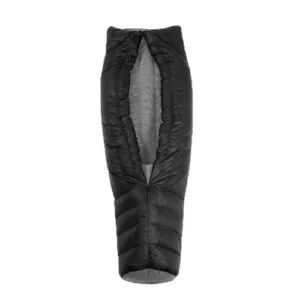
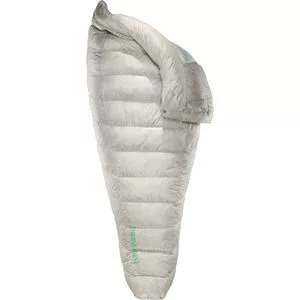
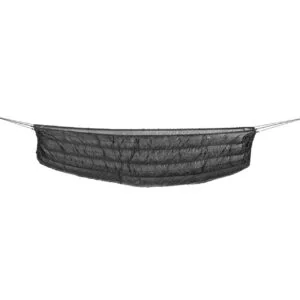
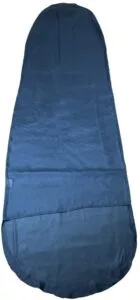
We are a group of volunteers and starting a new scheme in our community. Your web site provided us with valuable information to work on. You have done a formidable job and our whole community will be grateful to you.
На данном сайте вы сможете найти полезную информацию о препарате Ципралекс. Вы узнаете здесь информация о основных показаниях, дозировке и вероятных побочных эффектах.
http://RongrianBanKhokRahoeiThailand.eorg.xyz/category/website/wgI2vZFhZf5rbhFqBTP7G0CD1
46ue75